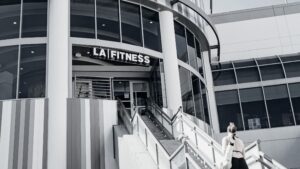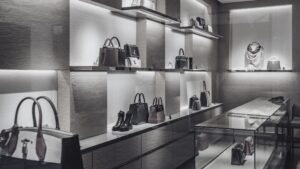Key Takeaways:
- Shoppers stepped up tariff-driven stock-ups for a second straight week: all-retail foot traffic accelerated from +3.34 % to +6.54 %.
- Apparel, footwear, and liquor momentum strengthened (clothing +7.17 %, shoe stores +6.14 %, beer–wine-liquor +7.01 %).
- Specialty food stores surged again—from an eye-catching +22.94 % to an even steeper +36.81 % YoY—as consumers race to secure imported delicacies.
- Big-basket destinations kept pace: warehouse clubs & supercenters improved from +4.97 % to +7.00 %, and grocery stores rose from +6.95 % to +7.41 %.
- Auto dealers snapped back dramatically (-15.73 % to +6.49 %) after an early-April lull, hinting that buyers worried about costlier vehicles are pulling forward purchases.
As rumors of upcoming tariffs sweep through headlines, consumer behavior is responding in real time—and nowhere is this more apparent than in shifting foot traffic patterns. Recent data from pass_by shows that store visits for multiple retail categories spiked, dipped, and then surged again between late March and mid-April.
The erratic movements underscore how consumers are racing to secure goods they fear will soon cost more, or holding off when the tariff picture remains murky. By analyzing these patterns, retailers gain valuable insights into customer sentiment and how best to adapt in an unpredictable environment.
Want more guidance? We will be providing free live data on how consumers are responding to the tariffs starting later this week. To get alerted of this as it drops, make sure you are subscribed to our newsletter here.
How Tariffs Have Affected Consumer Behavior
In the week ending March 23, categories like clothing, superstores, shoe stores, and department stores all posted robust gains in year-over-year (YoY) foot traffic. This surge is widely attributed to customers rushing to “lock in” pre-tariff prices—particularly for goods frequently imported from overseas. Clothing visits jumped by 6.20%, shoe stores grew by 4.36%, and superstores rose by 4.27%, suggesting that shoppers were concerned about pending duty increases on apparel, footwear, and everyday household items.
Just a week later, in the final days of March, foot traffic tumbled across many of these same categories. Clothing fell by -4.20%, shoe stores dropped -9.49%, and liquor store visits slipped by -5.31%. Analysts point to “pull-ahead” buying: those who had just stocked up on essentials, especially items at risk of tariff hikes, had little immediate need to shop again. Simultaneously, ongoing policy uncertainty may have prompted other consumers to delay spending until the next wave of official tariff news.
April has brought a surge across a number of retail categories
The first week of April saw a more tempered pace. Superstores, clothing, and electronics were down slightly, but grocery stores and liquor stores posted modest gains. This pattern indicates that many shoppers continued to approach non-essentials cautiously while maintaining consistent demand for staples. Some may have also waited for fresh information on which products would be hit hardest and how soon higher tariffs might take effect.
By April 13, however, foot traffic in multiple categories soared again:
- Clothing: +4.78%
- Grocery: +6.95%
- Shoe Stores: +4.03%
- Liquor: +5.49%
One standout was specialty food stores, which rocketed up by 22.94%—a significant leap that signals consumer anxiety about losing access to imported delicacies. Cheeses, olive oils, and other imported pantry items are prime candidates for tariff surcharges, prompting shoppers to stock up while they can still find familiar brands at lower prices.
By the Week ending Apr 20: momentum broadened: with clothing (+7.17 %), groceries (+7.41 %), liquor (+7.01 %), shoe stores (+6.14 %), specialty foods (+36.81 %) showing strong growth, plus sharp rebounds in autos (+6.49 %) and furniture (+3.95 %).
Why Consumers Are Shifting so Rapidly
Fear of Higher Prices
Many apparel, footwear, and specialty goods are sourced globally. With new tariffs looming, a portion of the public is engaging in preemptive bulk buying—hoping to avoid potential price hikes.
Unclear Implementation Timelines
Consumers who have already purchased items during a price scare may then pause until the tariff situation clarifies. If policy announcements remain vague, foot traffic can swing dramatically from one week to the next.
Promotional Timing
Retailers often respond to tariff buzz with flash discounts or limited-time deals, fueling short-lived surges in foot traffic. As soon as those promotions end, visits can retreat until the next sale or press announcement.
How pass_by Data Helps Retailers Stay Agile
These volatile patterns highlight the value of real-time analytics from pass_by. By monitoring foot traffic trends daily or weekly, retailers can:
Pinpoint Timing: Identify exactly when shoppers flood stores due to tariff concerns and adjust staffing and inventory accordingly.
Target Promotions: Launch discounts or bundle deals during heightened anxiety periods, enticing stockpilers without sacrificing margin during calmer weeks.
Track Category Shifts: Understand which products—footwear, specialty groceries, or liquor—drive the strongest surges, helping merchandisers allocate resources more effectively.
Examine Regional Disparities: Tariff concerns may vary by location. pass_by’s hyper-local breakdowns show which markets respond most sharply, informing tailored outreach and in-store events.
Read more about how retailers can navigate the tariffs here →
Strategies for Retailers in a Tariff-Driven Market
Transparent Communication
Consumers are less likely to hold off if they know how retailers intend to handle tariff increases. Clear messages about potential price changes or promotions can spur more consistent foot traffic.
Supply Chain Diversification
Adding domestic or tariff-exempt suppliers can help chains keep prices more stable, reassuring jittery shoppers.
Curated Bulk Options
As evidence of stockpiling grows, retailers can lean into bulk-pack deals—especially for specialty or imported items—so customers feel they’re preparing for potential cost hikes.
Omnichannel Integration
Blending online sales with in-store experiences is increasingly vital. Even if foot traffic dips for a week, a well-run e-commerce platform can cushion any revenue slowdown.
Looking Ahead
The volatility from late March into April is a preview of what may come if new tariffs are enacted or if negotiations stretch on. Shoppers will likely continue the “buy now or wait” dance, creating abrupt hills and valleys in foot traffic. Retailers that harness pass_by’s up-to-the-minute insights have the best chance of meeting demand precisely when it materializes—and scaling back during lulls to avoid overstock.
By combining data-driven strategy with transparent communication, retailers can cultivate trust and maintain healthier store visits, even in uncertain times. While nobody can predict exactly how tariff talks will conclude, the key to thriving amid the chaos lies in agility. Those who monitor consumer behavior closely, adapt quickly, and keep a finger on the pulse of shifting shopper attitudes will be poised for success—even in a market buffeted by constant tariff speculation.
Want more guidance? We will be providing free live data on how consumers are responding to the tariffs starting later this week. To get alerted of this as it drops, make sure you are subscribed to our newsletter here.






